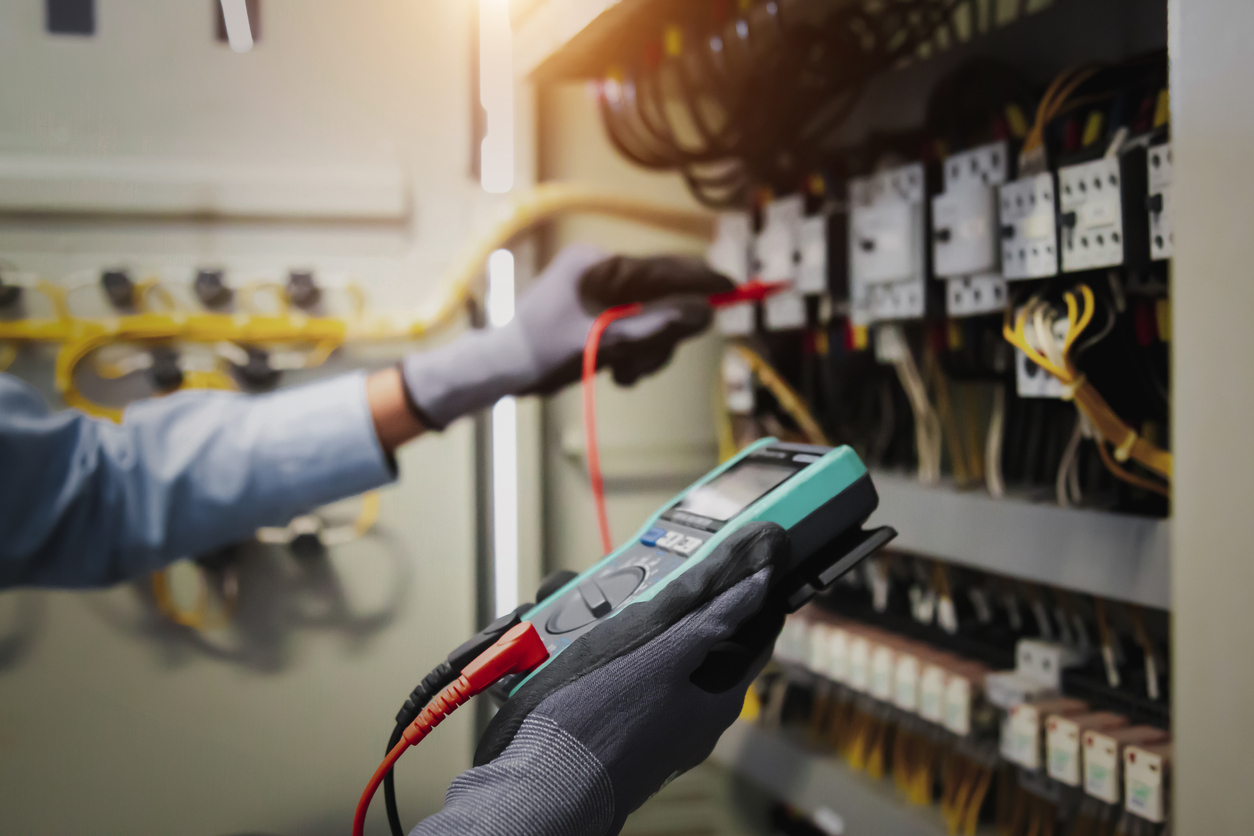The modern world relies on electricity. It is essential to our daily lives, powering everything from our houses to the machinery that runs our factories. However, with enormous power comes great responsibility, and ensuring electrical systems are safe and reliable is crucial. Electrical testing techniques are used in this situation. The importance of electrical testing, the numerous techniques and tools employed, and the crucial part it plays in preserving the integrity of electrical systems will all be examined in more detail in this article.
What is Electrical Testing?
Electrical testing is a methodical technique for evaluating the health and functionality of electrical systems and parts. The most important of its many important functions is safety. Regular testing is essential because faulty electrical systems provide a serious risk of electrical shock, fires, and equipment damage. Electrical testing assists in locating possible problems before they develop into risky circumstances, thereby protecting people and property.
Electrical testing is also necessary to guarantee the dependability and effectiveness of electrical systems. In industrial settings, electrical failures can lead to substantial financial losses. Therefore, proactive testing is an economical strategy to avoid unanticipated outages and keep production high.
Lastly, businesses need to comply with industry regulations and standards. These are in place to form a baseline for electrical safety and performance. Regular testing ensures that systems and parts comply with these requirements, lowering the possibility of non-compliance and unwelcome legal repercussions.
Methods of Electrical Testing
There are a number of ways that electrical tests can be carried out. We’ve listed the most common methods of testing below:
Visual Inspection
The simplest type of electrical testing is visual inspection, which comprises a thorough evaluation of electrical systems and components without physical touch. It is frequently the initial stage in any testing procedure and aids in locating evident problems like loose connections, noticeable damage, or overheated symptoms. Visual inspection is confined to finding visible faults and may not uncover underlying problems, despite the fact that it might offer insightful information.
Continuity Testing
Continuity testing is a technique used to check whether a circuit is complete and unbroken. In order to measure the resistance, a tiny electrical current must be passed through the circuit. A low resistance value shows that the circuit is fully functioning and continuous, whilst a high reading indicates that there is an open circuit. Testing for continuity is frequently done on wiring, switches, and fuses.
Voltage Testing
Gauging the voltage levels present in a circuit is essential for making sure that the voltage is within the acceptable range. Voltage testing can assist in finding overvoltage or undervoltage situations that could harm equipment or provide safety hazards. Voltmeters or multimeters are frequently used while testing voltage.
Insulation Resistance (IR) Testing
Insulation resistance testing is a method used to evaluate insulation materials in electrical systems, to ensure they’re fully functioning. The insulation’s resistance to electrical current is measured, which aids in identifying any deterioration or moisture intrusion. This test is essential for stopping electrical leakage and spotting possible dangers, particularly in high-voltage systems.
Power Quality Analysis
Monitoring and assessing the voltage stability, frequency, and harmonic distortion of electrical power is known as power quality analysis. This type of testing is essential for delicate electronic equipment and industrial operations since poor power quality can result in equipment faults and inefficiencies.
Types of Equipment Used for Electrical Testing
Different types of equipment are used for different methods of electrical testing. Ensuring you’re using the right equipment for the measurement you’re taking is crucial to getting the correct result. Take a look below at some of the main types of electrical testing equipment used in testing.
Electrical Testers
For both engineers and electricians, electrical testers are an essential tool. These versatile instruments measure voltage, current, resistance, and continuity. With user-friendly displays and intuitive interfaces, they help electricians and technicians identify problems quickly, ensuring the safety and reliability of electrical circuits and equipment.
Recommended Product
FLUKE T6-1000 PRO Electrical Tester
Oscilloscopes
Oscilloscopes are essential for diagnosing intricate electrical and electronic circuits because they can show electrical waveforms in real time. They provide accurate voltage, frequency, and time measurements that enable specialists to spot issues like voltage spikes, signal distortions, or atypical patterns.
Recommended Product
RND Lab 4x500MHz Oscilloscope, 5GSPS
Multimeters
Multimeters are a complete option for a variety of testing scenarios since they are versatile enough to detect not only voltage, current, and resistance but also capacitance, frequency, and temperature. Their easy-to-read displays and intuitive user interfaces guarantee accurate readings and assist in effective electrical system troubleshooting. They are a crucial tool for technicians and electricians and are available in both digital and analogue modes.
Recommended Product
FLUKE 179 True-RMS Digital Multimeter
Insulation Testers/Meggers
IR testers are vital for assessing the integrity of insulation materials in electrical systems. These specialised instruments provide high-voltage testing capabilities, allowing them to detect subtle issues like moisture ingress or insulation breakdown.
Recommended Product
Megger Insulation Tester MIT410/2
Clamp Meters
For professionals working on active electrical circuits, clamp meters provide a secure and practical option with their non-invasive current measurement capacity. These meters use magnetic induction to measure current, eliminating the need to disconnect wires for testing. They are perfect for fieldwork, where quick and precise current measurements are crucial, thanks to their ergonomic design and portability.
Recommended Product
FLUKE 376 FC Clamp Meter
Can be used for outdoor applications, including solar panels testing. More info here.
Power Quality Analysers
Power quality analysers have developed into powerful diagnostic instruments that track and examine several facets of electrical power. They are able to log and report data in addition to measuring voltage stability, harmonics, and transients. These cutting-edge capabilities give personnel the ability to identify and fix power quality problems, assuring the optimal operation of delicate equipment and reducing expensive downtime.
Recommended Product
Chauvin Arnoux 4-channel Power Quality Analyser (P01160595)
Why is Preventive Maintenance Important?
An important aspect of electrical testing methods is preventive maintenance. It entails routine testing and inspections to spot any problems before they cause equipment failure or accidents. Here’s why it’s so important to businesses:
- Increased equipment lifespan – Electrical equipment’s lifespan can be considerably increased with routine testing and maintenance. You can stop premature wear and tear by spotting problems early and fixing them.
- Reduced downtime – Electrical problems can cause unplanned downtime that can be expensive and disruptive. By reducing the likelihood of unplanned outages, preventive maintenance makes sure that business activities can run smoothly.
- Improved safety – Safety in electrical operations should always come first. Preventive maintenance reduces the chance of electrical accidents by assisting in identifying and addressing safety issues.
- Compliance with regulations – Electrical systems are governed by stringent laws and standards in many industries. Regular testing and maintenance lower the possibility of fines or legal problems by ensuring compliance with these regulations.
Conclusion
Electrical testing procedures are the backbone of electrical safety and reliability. These procedures, which range from straightforward visual checks to cutting-edge diagnostic methods, make sure that electrical systems function as intended and offer the fewest risks. Our electrical infrastructure can be kept safe, effective, and robust in the face of changing problems by investing in preventive maintenance and embracing technology advancements. Our dedication to evaluating and maintaining the systems that power our modern world must increase as our reliance on energy rises.











